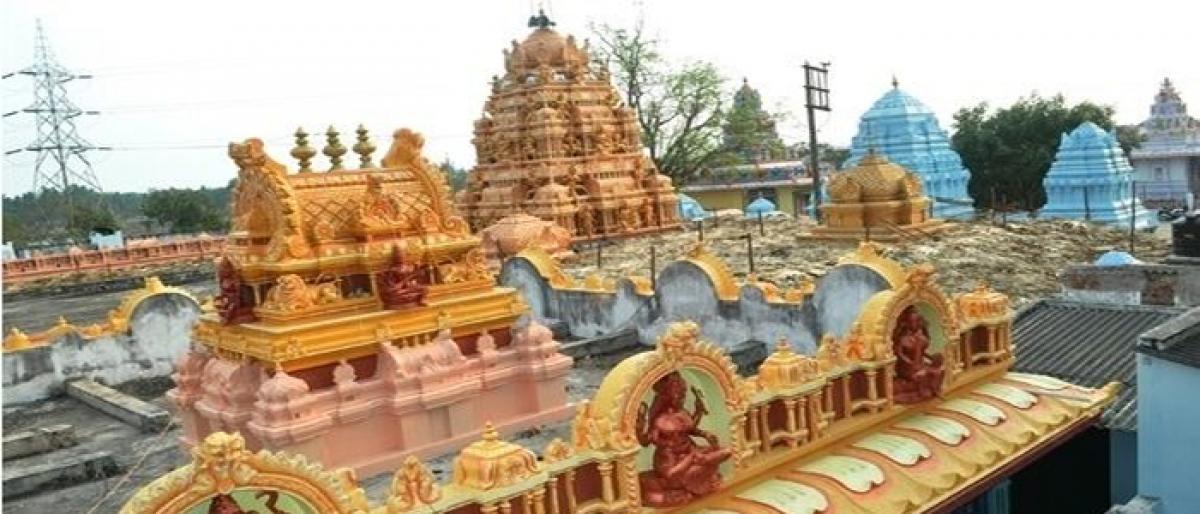Pithapuram: The divine abode

It is not just scenes from the epics and Puranas etched on stone and the architectural splendour that holds your attention. The splash of colour embellishing different sculptures within and outside the temple complex stand out in stark contrast to the light-coloured walls and the gopuram or the main entrance.
Birds delicately perched on the branches of the sacred Audambara tree add to the allure as does the pushkarini (pond) at the entrance. The huge temple complex of ‘‘Kukkuteshwara Swamy” in Pithapuram in the East Godavari district of Andhra Pradesh said to be one of the oldest and most sacred pilgrimage centres in India has a distinctly different feel to it. It beckons not just the devout but those interested in history, folklore and architecture.
With the history of the region dating back to the 5th century, architecture is said to be influenced by the style of the Vishnukundin and Chalukya dynasties. Referred to as “Pithikapuram” in the Puranas it is one of the Ashta dasha (18) Shakti peethas or places where body parts of Goddess Sati Devi fell. Driving down from Kakinada, on the wide well-maintained road with the sparse morning traffic, we found ourselves inside the temple well ahead of the half an hour travel time mentioned by the locals. The temple referred to as “Dakshina Gaya” or “Pada Gaya” is of three-fold importance as a Shiva Kshetra, a Shakti peetham and the birthplace of Sripada Vallabha one of the first incarnations of Lord Dattatreya.
As soon as we enter the temple, we see the mandapam housing the huge horizontal statue of Gayasura, a powerful and pious asura on whose body Brahma, Vishnu and Maheshwara are performing a yagna. His body was said to be so huge that his head rested in Bihar, body in Orissa and feet touched Pithapuram. Legend has it that Gayasura, who had become all-powerful had usurped Indra’s position as the King of the God’s and the trinity approached Gayasura disguised as Brahmins in response to Indra’s penance.
They asked Gayasura for a place to perform the Yagna upon which Gayasura offered his body as a venue. The Gods agreed on the condition that they would slay him if he got up before the completion of the yagna. Gayasura was tricked into believing that the yagna was completed on the 7th day when he heard a rooster crow at “midnight” and was slain.
This is where Gayasuras feet fell and is known as “Pada Gaya”, where visiting devotees are said to gain moksha or liberation. Kukkuteswara Swamy, a form of Lord Shiva is the presiding deity, who reveals himself in the form a swayambhu (self-originating) marble lingam of two-feet height, resembling a “kukkutam” (rooster). Facing Kukkteshwara Swamy is a huge “Eka Sila Nandi” (bull) carved out of a single stone.
To the Northeast corner of the temple is the black stone idol of Goddess “Puruhootika Devi” with the temple walls carved with the 18 incarnations of the goddess. The idols of “Hoonkarini Devi” and “Raja Rajeshwari’’ are among the several smaller shrines to various gods and goddesses that are nestled inside. Behind these shrines is the “Sripada Vallabha” kshetra, the incarnation of Dattatreya and the Audamabar tree where devotees pray with fervour for fulfilling their wishes.


